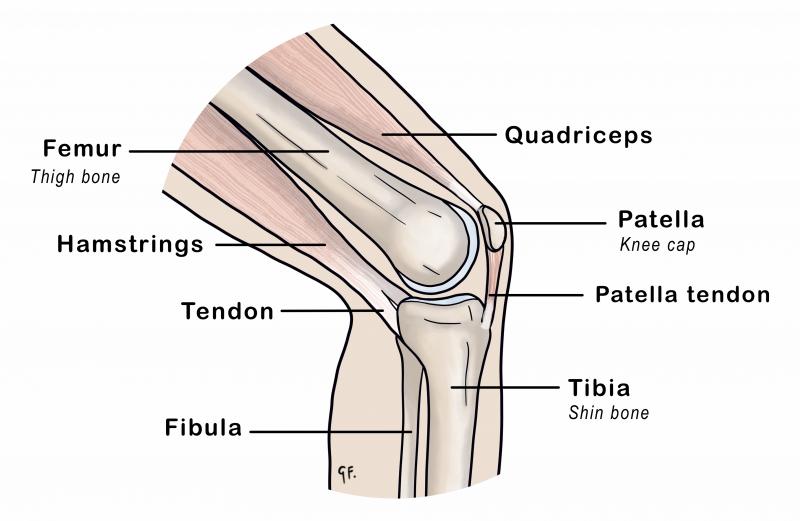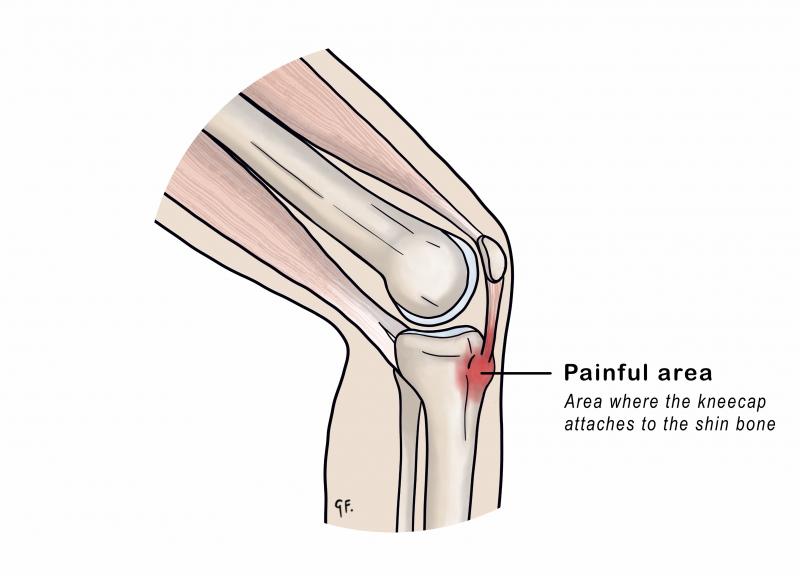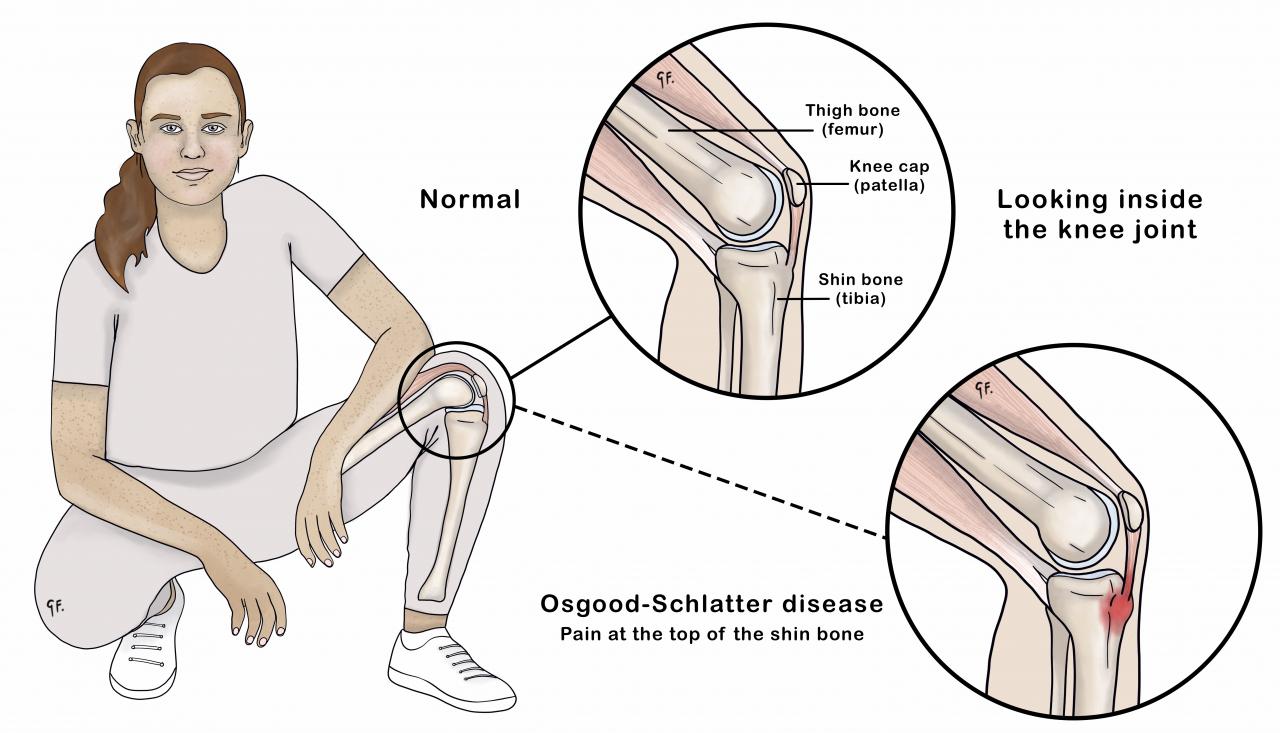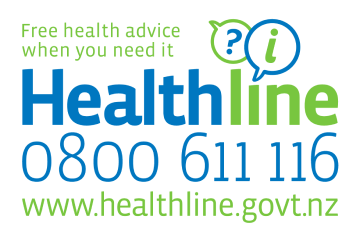Osgood-Schlatter Disease
Osgood-Schlatter Disease
Osgood-Schlatter disease is a common condition that causes knee pain. It is common in active tamariki (children) and rangatahi (young people). Osgood-Schlatter disease goes away on its own for most tamariki and rangatahi once their bones have stopped growing.
Key points about Osgood-Schlatter disease
- Osgood-Schlatter disease is a common condition that causes knee pain
- it is common in active tamariki and rangatahi
- it can cause a painful bony lump over the top of the shin bone
- rest, ice, pain medicine and physiotherapy can all help manage Osgood-Schlatter disease
- Osgood-Schlatter disease goes away on its own for most tamariki and rangatahi once their bones have stopped growing
What is Osgood-Schlatter disease?
Osgood-Schlatter disease is a common condition that causes pain and swelling below the knee. The pain is felt where the kneecap (patella) attaches to the shin bone (tibia).
A bit about the knee
The knee is the largest and strongest joint in the body. It includes the:
- thigh bone (femur)
- upper end of the shinbone (tibia)
- kneecap (patella)
Muscles, ligaments and tendons around the knee act like strong ropes to hold the bones together.
The below illustration looks at the parts of the knee joint.

The illustration shows the part of the knee that hurts in Osgood-Schlatter disease.

Who is affected by Osgood-Schlatter disease?
Osgood-Schlatter disease often happens to active tamariki and rangatahi. Your child has a higher chance of getting Osgood-Schlatter disease if they are:
- male
- a teenager
- playing lots of sports that involve jumping, kicking and running
What are the symptoms of Osgood-Schlatter disease?
Osgood-Schlatter usually only causes symptoms in one knee, but some tamariki and rangatahi can have symptoms in both knees.
Common symptoms of Osgood-Schlatter disease include:
- pain just below the kneecap
- pain that gets worse during and after activity
- pain that gets better after resting
- a small, hard and painful bump under the kneecap
Pain from Osgood-Schlatter disease can last from a few months to a couple of years. Tamariki and rangatahi with Osgood-Schlatter disease usually don’t have problems moving their knees.
What causes Osgood-Schlatter disease?
Osgood-Schlatter disease causes pain in the upper part of the shin bone.
The quadriceps muscle (the muscle at the front of the thigh) attaches to the knee cap, and the knee cap is attached to the upper part of the shin bone by a tough fibrous cord called the patella tendon (or ligament).
Overuse of the quadriceps muscle can strain the area where the patella ligament attaches to the shin bone. This causes pain over the upper part of the shin bone.
For some tamariki and rangatahi, a small flake of bone can pull off the shin bone where the ligament attaches. A hard bony bump may develop as the bone starts to heal and it forms a callus.
When should I take my child to a health professional?
If your child has knee pain, take them to a health professional.
Take your child to a health professional urgently if they have knee pain and:
- a fever
- swelling around one or both knees
- it occurs at night for more than 3 nights
- they refuse to walk or put weight on the leg
There are lots of differenct causes of knee pain in tamariki and rangatahi. Seeing a health professional helps to work out what is causing your child’s pain.
See the KidsHealth page on knee pain in children to learn about other causes
How is Osgood-Schlatter disease diagnosed?
The health professional will ask you questions and examine your child’s knee area. They may also order a knee x-ray to rule out other conditions.
See the KidsHealth page on x-rays for more information.
What is the treatment for Osgood-Schlatter disease?
Osgood-Schlatter disease is not a serious or harmful condition. For most tamariki and rangatahi, the pain goes away without any treatment once the shin bone has finished growing.
If treatment is needed, the following things may help relieve your child’s symptoms.
Rest and ice
Encourage your child to avoid lots of sports and exercise. Get them to rest their knee as much as they can. Putting ice on the knee, especially after activity, can help.
Pain relief
Paracetamol
If your child has pain, you can give paracetamol to make them more comfortable. You must follow the dosage instructions on the bottle. It is dangerous to give more than the recommended dose.
Other medicine
If your doctor gives your child ibuprofen (such as Nurofen or Fenpaed), or if you buy it at the pharmacy, follow the dosage instructions carefully. It is dangerous to give more than the recommended dose. Never give your child aspirin, as this may increase the risk of Reye syndrome, which is a rare and serious illness.
Physiotherapy
Physiotherapists will give your child stretching and strengthening exercises. These will help strengthen the muscles around the knee to help reduce pain.
Knee supports
Knee supports such as knee tape, splints or crutches can help to support the knee. Talk to the physiotherapist about whether a knee support will be helpful for your child.
Surgery
If your child’s symptoms are ongoing and they don’t go away after the above treatments, very rarely, surgery may be necessary to remove the bony bump on the shin bone.
What can I do at home to help my child with Osgood-Schlatter disease?
Here are some things you can try at home to help manage your child’s knee pain.
Monitor their activity
Ensure your child gets enough rest and avoids activities that worsen knee pain. Help them slowly return to physical activities as their symptoms improve.
Prepare before activity
You can help your child prepare themselves before sports or activities. This includes making sure they have the right shoes for that activity. Also, encouraging them to stretch before and after any sports or activities can help.
Exercises
The physio or health professional may give your child exercises to help strengthen the muscles around their knee joint. Encourage your child to do these regularly and build them into their routine.
This page last reviewed 08 July 2024.
Do you have any feedback for KidsHealth?
If you have any feedback about the KidsHealth website, or have a suggestion for new content, please get in touch with us.
Email us now
